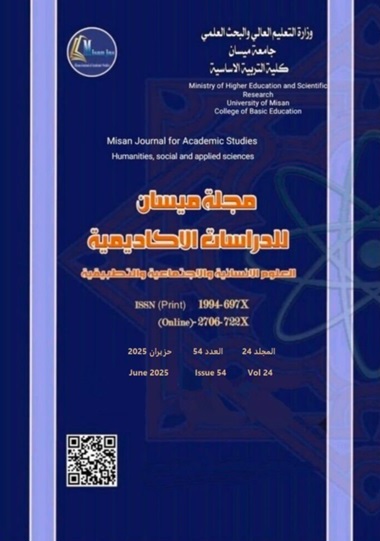Determine the bacterial resistance of Streptococcus sobrinus to antibiotics
Abstract
Antibiotics are chemical compound produced by microorganism that kill, or inhibits the growth of the other microorganism. Antibiotics are divided into two types based on their action: bacteriostatic antibiotics, such as tetracycline, and bactericidal antibiotics, such as penicillin. The study aimed was to determine bacterial resistance of S. sobrinus to antibiotics and detect resistance genes. The results for S. sobri
nus showed that 41.6% of isolates formed biofilms, and 58.3% were non-biofilm-forming. The results show a clear variation in resistance and sensitivity to antibiotics. S. sobrinus isolates showed 100% complete resistance to amoxicillin. These isolates also showed high resistance to tetracycline and ampicillin (75%), and 66.67% resistance to ciprofloxacin. The isolates showed sensitivity to s (91.67%), erythromycin (50%), gentamycin (41%), cls (66.67%), and hls (75%).
Downloads
Copyright (c) 2025 (Humanities, social and applied sciences) Misan Journal of Academic Studies

This work is licensed under a Creative Commons Attribution-NonCommercial-NoDerivatives 4.0 International License.
The copyright is also the copyright of the magazine only.
All articles published in our magazine are subject to license terms
Creative Commons Attribution(CC BY-NC-ND 4.0) This license permits the content to be reproduced, redistributed and reused in whole or in part for any purpose free of charge, without any permission from the author(s), researcher or student.
Works submitted to Maysan Journal of Academic Studies for publication in the journal (CC BY-NC-ND 4.0) license terms. Where available content can be shared, distributed and replicated provided there is no commercial profit and appropriate credit must be given to the original source through sources or citations. It is mandatory to review any material used from other sources including shapes, tables, and images for re-use under the terms of the Creative Commons License (CC BY-NC-ND 4.0).Provided that there is no modification to the original content



